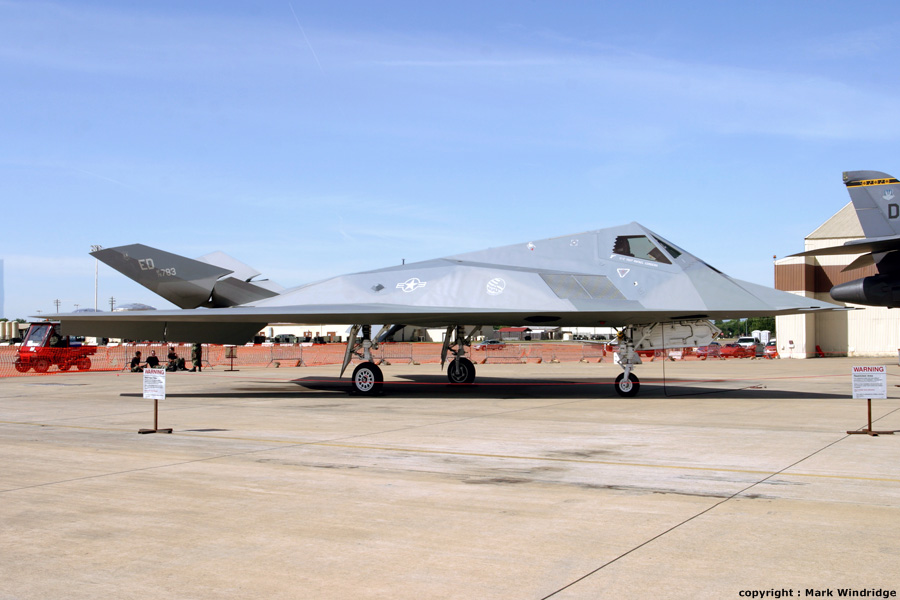Steve Pace
Aviation History Writer
- Joined
- 6 January 2013
- Messages
- 2,266
- Reaction score
- 225
Boeing says 0.855 Mn is typical cruise speed for 747-400ER and the new 747-8.
XB-70 Guy said:Boeing says 0.855 Mn is typical cruise speed for 747-400ER and the new 747-8.
Sundog said:the 747's cruise speed is listed as M=.85, just as it's top speed is M=.92
Orionblamblam said:Top speed of the 747, at least the 747SP, is faster than that. Apparently top speed exceeds Mach 1.
China Airlines was good enough to test that.
Sundog said:Was that something they actually tested, or just dumb pilots not paying attention to their rate of descent?
quellish said:Tail flutter limited the F-117's speed.
Orionblamblam said:.....doing a Mach-busting powerdive in a 747 is contraindicated in most flight manuals.
Orionblamblam said:I imagine the grate over the inlets might make a mess of trying to get decent engine performance once you bust Mach 1.
quellish said:It was found that at transonic speeds the grids did not impede flow (and in fact improved it), though faster than that I do not know.
quellish said:quellish said:From my understanding....
1. The money allocated for maintaining them went elsewhere.
2. Pilots and crew are not being kept current in the type, so the readiness of the airframes does not matter much
3. Part of the "readiness" contract was to keep the TTR facilities running. That has been happening, and there is now another unit there.
Finally found the photo of the F-117s in storage at TTR.
XB-70 Guy said:Is there a high res of this image available?
Matej said:Just received. This is not seen very often.
Matej said:Just received. This is not seen very often.
Matej said:Just received. This is not seen very often.
Grey Havoc said:Has anything recently surfaced on the ATA B design?
Bazinga said:Looks like not only the F-117 is stripped. This looks like an SR-71 undergoing the same treatment.
Bazinga said:That was my first thought too but I'm not completely convinced. The way the white is distributed and the location of the bird doesn't tell me it in storage.
Perhaps some of you are around the AMARC and see a snap of a stored Blackbird

Article 780, a Lockheed YF-117A stealth test aircraft, first flew on June 18, 1981, with pilot Harold Farley at the controls. The planned 30-minute sortie was cut short after 13 minutes due to a canopy warning light and overheating in the exhaust duct. Article 780 was painted light gray to reduce its daytime visual signature. Ben Rich, Lockheed’s vice president for advanced projects, wanted to deliver the production F-117A aircraft in gray, but General William Creech, chief of Tactical Air Command, wanted the airplanes painted black. “You don’t ask the commander of TAC why he wants to do something,” Rich recalled. “He pays the bills. If the general had wanted pink, we’d have painted them pink.”
Bazinga said:That was my first thought too but I'm not completely convinced. The way the white is distributed and the location of the bird doesn't tell me it in storage.
Perhaps some of you are around the AMARC and see a snap of a stored Blackbird
Grey Havoc said:
Lockheed Martin Skunk Works
Article 780, a Lockheed YF-117A stealth test aircraft, first flew on June 18, 1981, with pilot Harold Farley at the controls. The planned 30-minute sortie was cut short after 13 minutes due to a canopy warning light and overheating in the exhaust duct. Article 780 was painted light gray to reduce its daytime visual signature. Ben Rich, Lockheed’s vice president for advanced projects, wanted to deliver the production F-117A aircraft in gray, but General William Creech, chief of Tactical Air Command, wanted the airplanes painted black. “You don’t ask the commander of TAC why he wants to do something,” Rich recalled. “He pays the bills. If the general had wanted pink, we’d have painted them pink.”
http://www.airspacemag.com/multimedia/The-Origins-of-Area-51-200064721.html
jemhouston said:once it reached cruising height, it wasn't almost impossible to see from the ground.

TaiidanTomcat said:I had heard from an F-117 crewman that it was a general's idea to paint them black. The crewman was around when they were testing the gray dragon jet a few years before retirement and said it was extremely hard to spot. He said the reason the general originally picked black was because it was scary looking. YMMV
Ben Rich, Lockheed’s vice president for advanced projects, wanted to deliver the production F-117A aircraft in gray, but General William Creech, chief of Tactical Air Command, wanted the airplanes painted black. “You don’t ask the commander of TAC why he wants to do something,” Rich recalled. “He pays the bills. If the general had wanted pink, we’d have painted them pink.”
